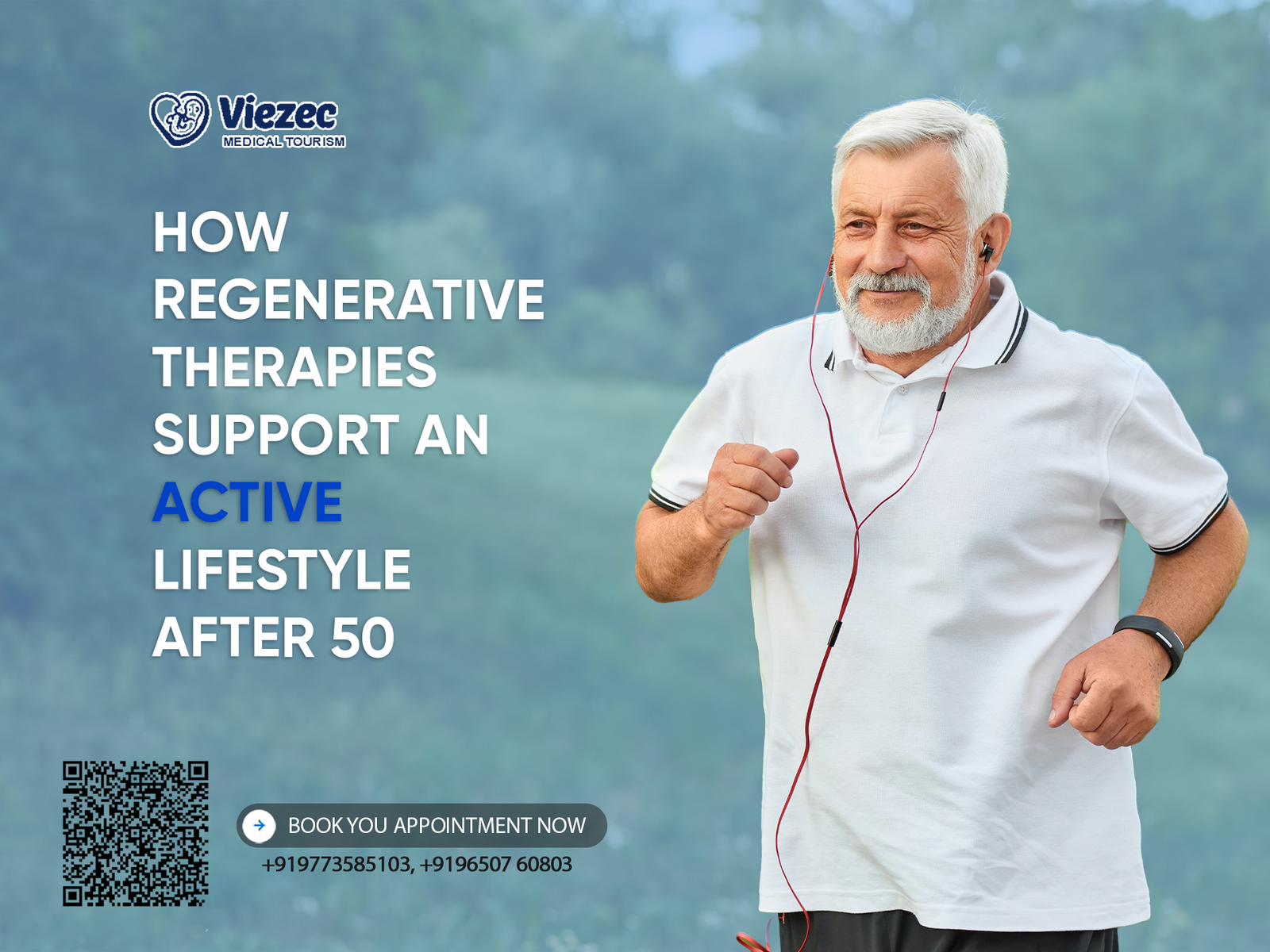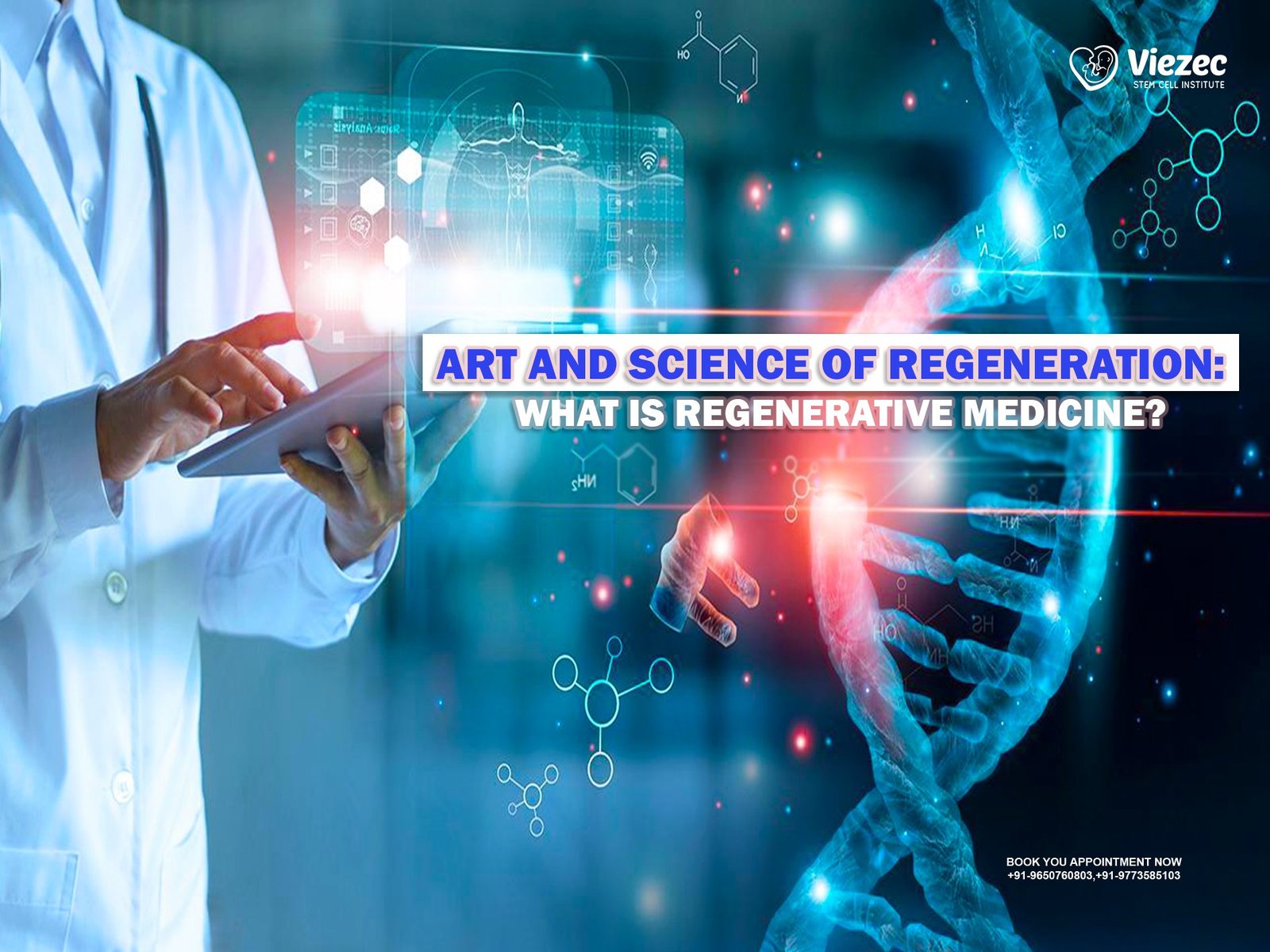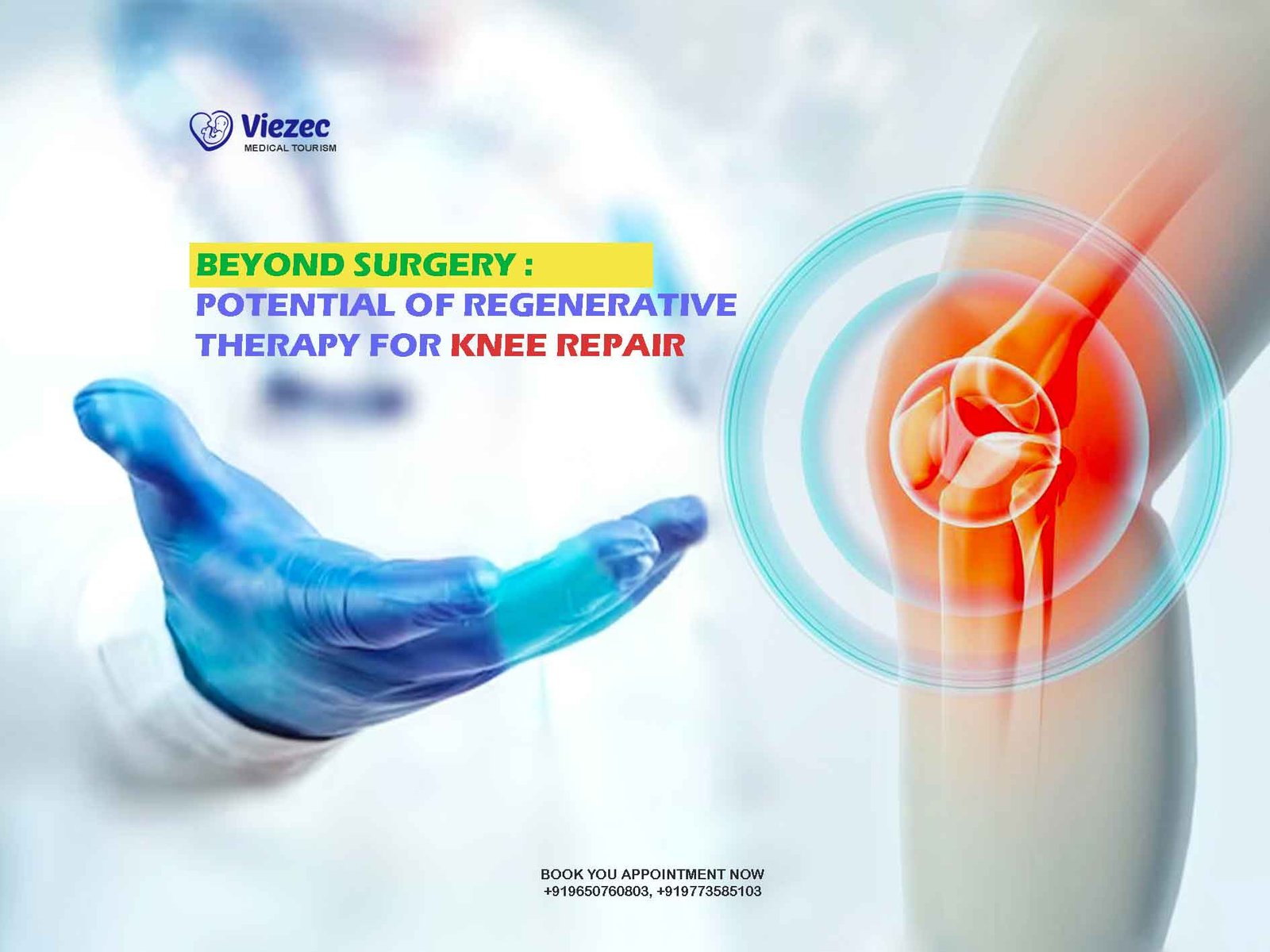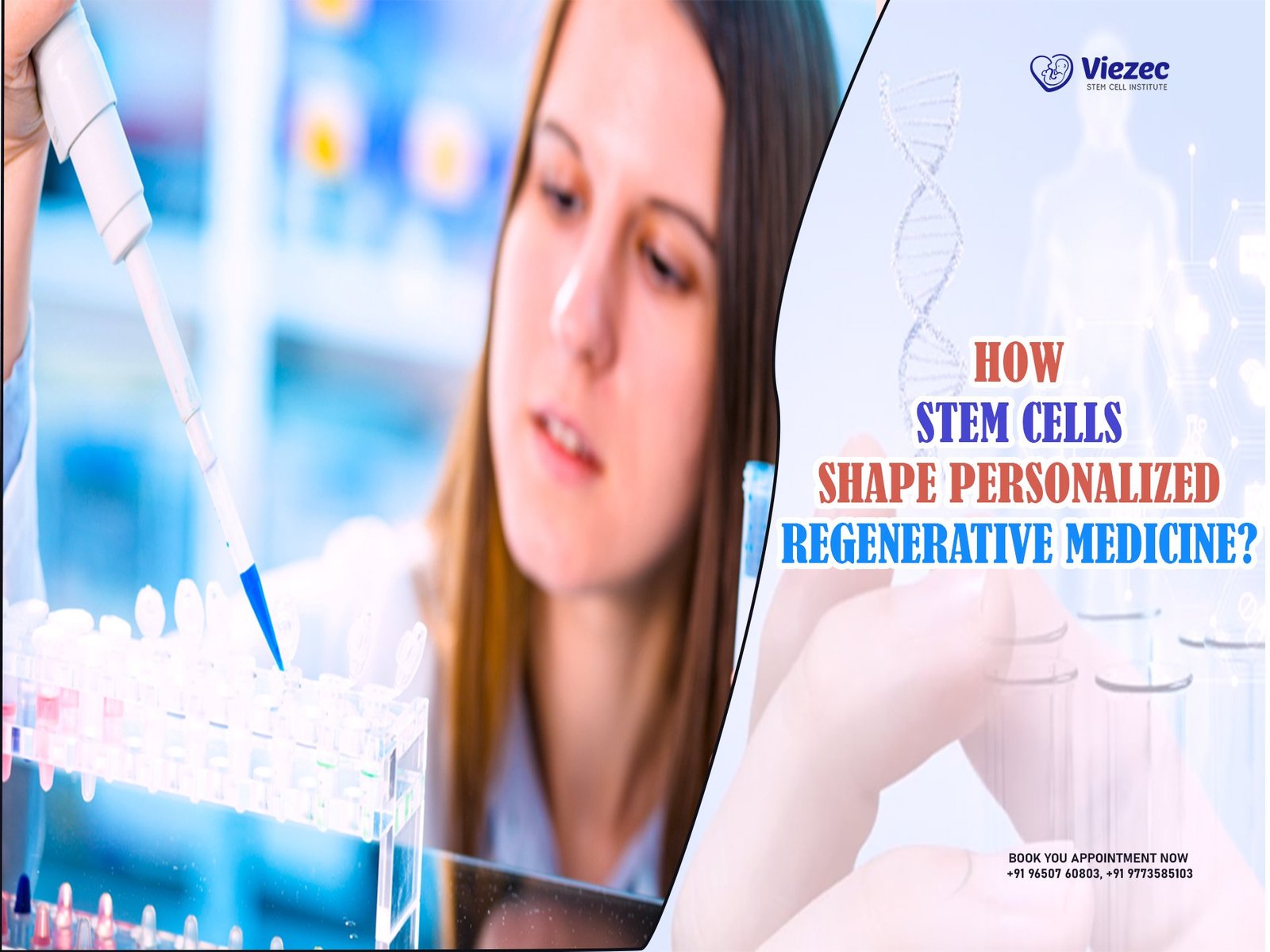Aging is a natural part of life, but it doesn’t have to mean slowing down or giving up the activities you love. For many people over 50, staying active—whether it’s hiking with friends, playing with grandkids, or hitting the gym—remains a priority. However, joint pain, muscle stiffness, and slower recovery times can make maintaining that lifestyle challenging. This is where regenerative therapies come in. These innovative treatments harness the body’s own healing potential to repair tissues, reduce pain, and restore function, offering a promising way to keep moving well into your later years.
Regenerative therapies, including options like stem cell therapy, platelet-rich plasma (PRP), and exosomes, are gaining traction for their ability to address age-related wear and tear without invasive surgeries or heavy reliance on medications. They’re not a magic bullet, but for those over 50 looking to stay active, they can be a game-changer. Let’s explore how these therapies work, why they matter, and how they can support an energetic, fulfilling lifestyle past midlife.
Understanding Regenerative Therapies: A New Frontier in Healing
Regenerative therapies focus on repairing and regenerating damaged tissues rather than just masking symptoms. Unlike traditional treatments that might rely on painkillers or surgery, these approaches stimulate the body’s natural repair mechanisms. Think of it as giving your cells a helping hand to do what they’ve always done—just a little better and faster.
Stem cell therapy, for example, uses undifferentiated cells that can transform into specialized cells to rebuild cartilage or muscle. PRP involves concentrating platelets from your own blood and injecting them into injured areas to speed healing. Exosomes, tiny vesicles packed with growth factors, act as messengers to promote tissue repair. These therapies emerged from decades of research into how the body heals itself, and they’re now accessible to more people than ever, offering a less invasive alternative to conventional options.
For those over 50, this means addressing the root causes of physical limitations—like worn-out joints or chronic inflammation—rather than just putting a Band-Aid on the problem. The result? A stronger foundation for staying active.
Why Staying Active After 50 Matters
An active lifestyle after 50 isn’t just about physical health; it’s about quality of life. Regular movement keeps your heart strong, your mind sharp, and your spirits high. Studies show that staying active reduces the risk of chronic conditions like diabetes, heart disease, and even dementia. Plus, it helps maintain independence—no small thing when you want to keep up with a busy schedule or enjoy spontaneous adventures.
But aging brings challenges. Cartilage thins, muscles lose mass, and recovery from injuries takes longer. A simple twist of the knee during a pickleball game or a stiff shoulder from gardening can sideline you for weeks. Regenerative therapies step in here, offering a way to bounce back faster and keep those setbacks from becoming permanent roadblocks.
The Science Behind Aging and Activity
As we age, the body’s repair systems slow down. Collagen production drops, inflammation lingers, and stem cells become less efficient. This is why a sprained ankle at 25 might heal in days, but at 55, it could linger for months. Add in wear-and-tear conditions like osteoarthritis or tendonitis, and staying active can feel like an uphill battle.
Regenerative therapies target these processes directly. Stem cells can replenish damaged cartilage, PRP reduces inflammation and boosts blood flow, and exosomes signal cells to regenerate. It’s like hitting the reset button on your body’s healing clock—not to turn back time, but to give you the tools to keep going.
Stem Cell Therapy: Rebuilding From Within
Stem cell therapy is one of the most talked-about regenerative treatments, and for good reason. These cells have the unique ability to become whatever your body needs—cartilage, muscle, or even bone. For someone over 50, this could mean repairing a knee joint worn down by decades of running or strengthening a rotator cuff strained from years of swimming.
The process typically involves harvesting stem cells from your own fat tissue or bone marrow, then injecting them into the problem area. Over weeks to months, these cells get to work, reducing pain and improving function. For active adults, this can translate to getting back on the hiking trail or swinging a golf club without wincing. It’s not instantaneous, but the gradual improvement can make a world of difference.
Platelet-Rich Plasma (PRP): Harnessing Your Blood’s Power
PRP is another star in the regenerative lineup. It’s simple yet effective: a small sample of your blood is spun in a centrifuge to concentrate the platelets, which are then injected into an injured area. Platelets are packed with growth factors that kickstart healing, making PRP ideal for tendon injuries, mild arthritis, or muscle strains.
Imagine you’re an avid cyclist who’s been sidelined by knee pain. A few PRP sessions could reduce inflammation and repair damaged tissue, letting you pedal pain-free again. Because it uses your own blood, the risk of side effects is low, and recovery time is minimal—perfect for someone who doesn’t want to pause their active routine for long.
Exosomes: The Tiny Helpers of Regeneration
Exosomes are the newcomers in regenerative medicine, but they’re making waves. These microscopic packets, derived from stem cells, carry proteins and genetic material that tell your cells to repair and regenerate. They don’t become new tissue themselves; instead, they boost your body’s existing cells to work harder.
For someone over 50, exosomes might help with chronic joint pain or slow-healing injuries. They’re often delivered via injection or IV, and early research suggests they could reduce inflammation and promote tissue growth. Picture a weekend warrior with a nagging Achilles tendon issue—exosomes could speed recovery, keeping those morning runs on the calendar.
Tackling Joint Pain: A Common Barrier to Activity
Joint pain is the nemesis of many active adults over 50. Osteoarthritis, in particular, affects millions, wearing down cartilage and causing stiffness and discomfort. Suddenly, a brisk walk or a yoga class feels daunting instead of invigorating.
Regenerative therapies shine here. Stem cells can rebuild cartilage, PRP can ease inflammation, and exosomes can enhance overall joint health. Together, they offer a multi-pronged approach to keeping joints flexible and pain-free. For someone who loves dancing or tennis, this could mean staying in the game rather than watching from the sidelines.
Speeding Up Recovery: Getting Back to Action Sooner
One of the biggest frustrations after 50 is how long it takes to recover from injuries. A pulled muscle or a minor sprain can linger, derailing your fitness routine or outdoor plans. Regenerative therapies cut that downtime by accelerating the healing process.
Take PRP, for instance. By delivering a concentrated dose of healing factors directly to the injury, it can shave weeks off recovery. Stem cells go further, repairing tissue at a cellular level. For an active 50-something, this means less time on the couch and more time doing what you love—whether it’s kayaking, gardening, or chasing after a soccer ball with the kids.
Reducing Reliance on Surgery and Medications
Surgery and painkillers have long been go-to solutions for age-related aches and injuries, but they come with downsides. Joint replacements require months of rehab, and medications like NSAIDs can cause stomach issues or dependency over time. Regenerative therapies offer an alternative that’s less invasive and more sustainable.
Instead of replacing a knee, stem cells might repair it enough to delay or avoid surgery altogether. Instead of popping pills for chronic back pain, PRP could address the inflammation at its source. For active adults, this means staying in control of your health without the risks or recovery periods that slow you down.
Supporting Muscle Health and Strength
Muscle mass naturally declines with age—a condition called sarcopenia—which can sap strength and stamina. Lifting weights or climbing stairs gets harder, and injuries become more likely. Regenerative therapies can help here, too.
Stem cells and PRP promote muscle repair and growth by enhancing blood flow and reducing inflammation. While they won’t turn you into a bodybuilder overnight, they can support your efforts to stay strong and mobile. For someone who enjoys weightlifting or long hikes, this extra boost can keep muscles resilient and ready for action.
Boosting Energy and Endurance
An active lifestyle isn’t just about strength—it’s about having the energy to keep going. Chronic pain and inflammation can drain you, making even a short walk feel exhausting. By repairing tissues and calming inflammation, regenerative therapies help restore that get-up-and-go.
Exosomes, with their ability to improve cellular communication, might enhance overall vitality. PRP and stem cells, by fixing nagging injuries, free up energy that was once spent compensating for pain. The result? More stamina for that weekend bike ride or evening dance class.
Personalizing Treatment for Your Lifestyle
One size doesn’t fit all when it comes to staying active after 50. A runner’s needs differ from a swimmer’s, and a gardener’s aches aren’t the same as a golfer’s. Regenerative therapies are highly customizable, tailored to your specific injuries, goals, and activity level.
A doctor might recommend PRP for a tennis elbow flare-up or stem cells for a degenerative hip issue. The treatment plan evolves with you, ensuring it supports the activities that matter most. This personalized approach makes it easier to stick with the hobbies and routines that keep you fulfilled.
Real-Life Success Stories
The proof is in the people. Take Sarah, a 58-year-old hiker who thought her days of scaling peaks were over due to knee arthritis. After a series of stem cell injections, she’s back on the trails, pain-free. Or Mark, a 62-year-old golfer whose shoulder pain vanished after PRP, letting him swing without hesitation.
These aren’t miracles—they’re examples of how regenerative therapies can bridge the gap between aging and activity. Clinics worldwide report similar outcomes: patients returning to sports, workouts, or simply daily life with renewed vigor. For those over 50, these stories are a reminder that an active future is within reach.
Looking Ahead: The Future of Active Aging
Regenerative medicine is still evolving, with research uncovering new ways to enhance its benefits. Advances in stem cell sourcing, exosome delivery, and combination therapies promise even better results in the years ahead. For now, what’s available is already transforming lives, helping people over 50 defy the stereotype of slowing down.
Staying active after 50 isn’t about denying age—it’s about embracing it with the best tools possible. Regenerative therapies offer a way to heal smarter, recover faster, and keep moving on your terms. Whether you’re chasing a personal best or just enjoying a walk in the park, these treatments can help you live the life you want, not the one your body dictates.
Regenerative therapies are more than a medical trend—they’re a lifeline for those over 50 who refuse to let age define their limits. By repairing joints, speeding recovery, and boosting strength, they pave the way for an active, vibrant lifestyle. The science is solid, the results are real, and the potential is vast. If you’re looking to keep up with your passions—be it sports, travel, or playtime with family—these therapies might just be the key to unlocking your next chapter. Talk to a specialist, weigh your options, and take the first step toward moving better, longer.









